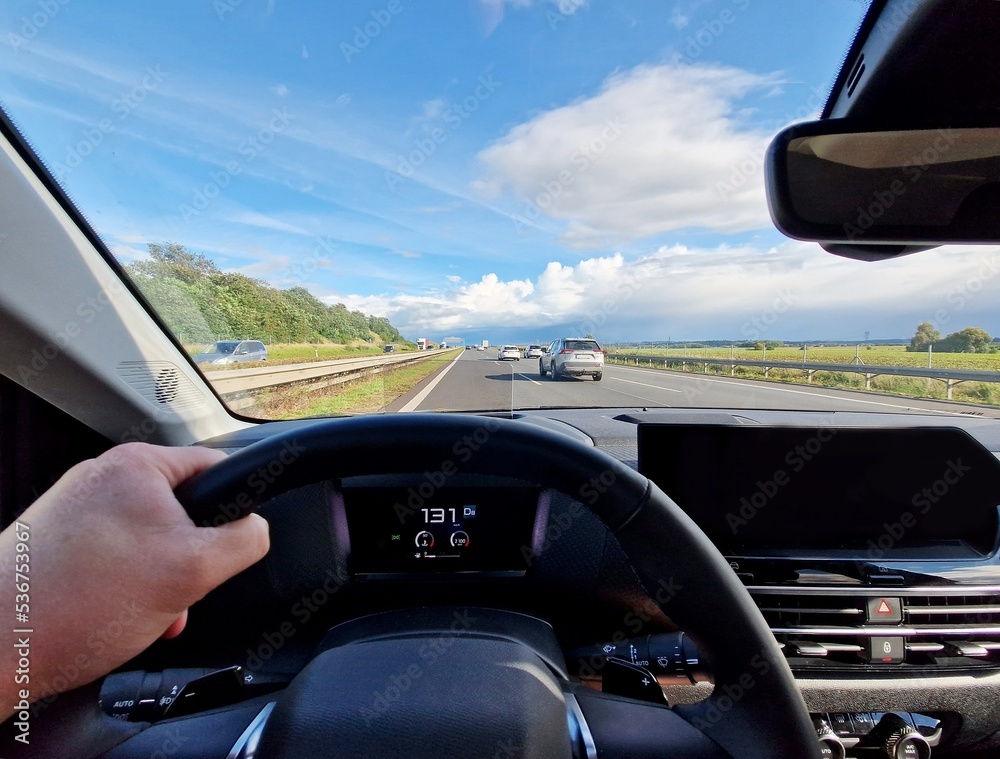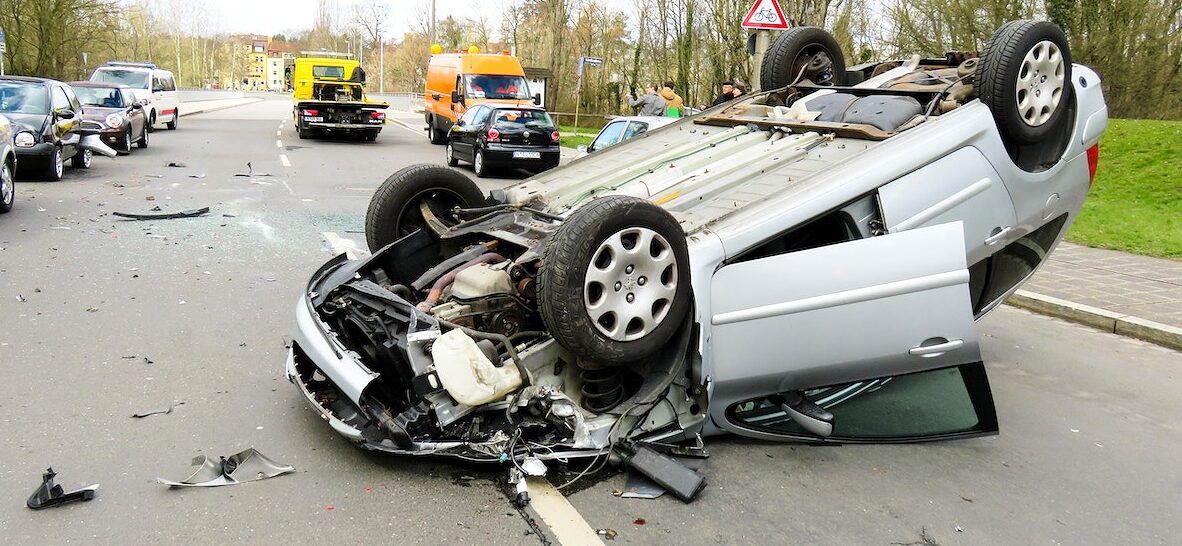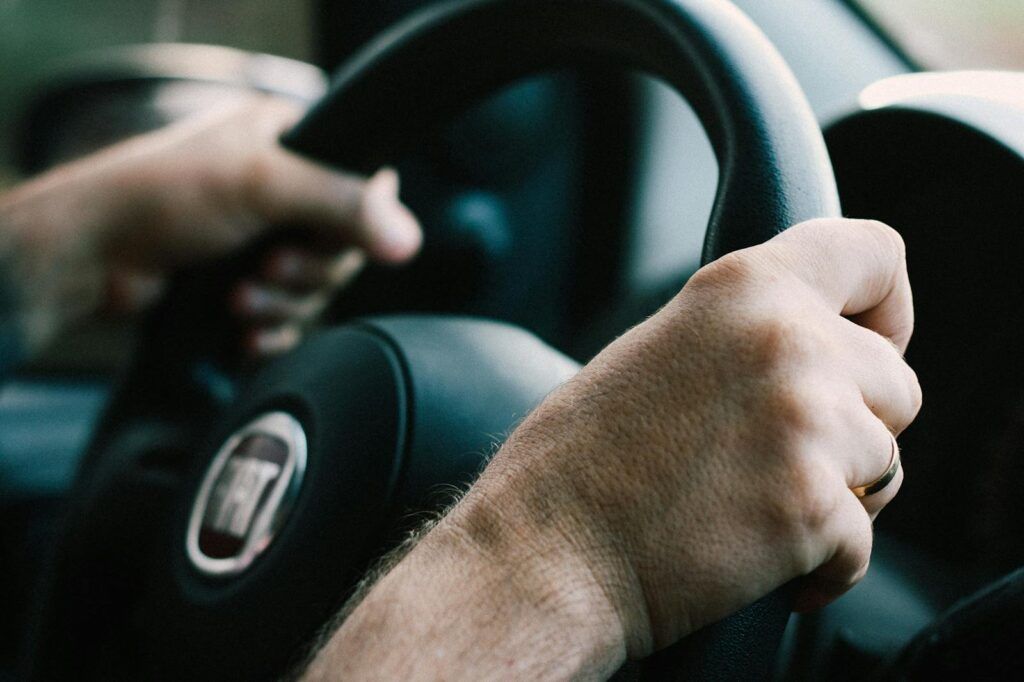
Most drivers, when asked, would likely consider themselves competent and safe behind the wheel, a belief particularly prevalent among those who obtained their licenses a decade or more ago. However, despite our initial carefulness and adherence to rules, it’s alarmingly common for individuals to gradually pick up a few bad driving habits along the way, often without conscious awareness of their growing risk. These seemingly minor lapses in judgment or attention can have severe consequences, not just for ourselves and our passengers, but for everyone else sharing the road.
The statistics paint a truly worrying picture: US driving fatality statistics are on the rise for the first time since 2005, causing significant alarm across the nation. The National Highway Traffic Safety Administration (NHTSA) estimates a staggering 43,000 people died in vehicle accidents in 2021 alone. This alarming trend continued into 2022, with a further 7 percent increase in driving fatalities in the first quarter compared to the previous year’s same period, signaling a dire need for immediate change in driver behavior.
While not all dangerous habits immediately lead to serious accidents, they frequently result in traffic violations, increased insurance premiums – for instance, a speeding ticket can cause your insurance premium to rise by 25 percent, and even more in states like California where drivers can expect to pay 37 percent more annually for full coverage after just one ticket – and unnecessary stress on your vehicle. As responsible road users, we have a collective duty to audit our behavior, identify these pervasive pitfalls, and commit to driving as safely as possible. Let’s delve into some of the most critical habits that put us all at risk and explore why it’s imperative to stop them immediately.

1. **Driving Distracted (Especially Phone Use)**Distracted driving consistently ranks at the top of lists for good reason, emerging as a modern epidemic fueled significantly by the constant lure of smartphones. According to the CDC, a horrifying more than 3,100 people were killed and 424,000 were injured in crashes involving a distracted driver in 2019 alone. This isn’t just a minor issue; it’s a profound safety crisis unfolding on our roads every single day, demanding our undivided attention.
While other behaviors like eating, adjusting the radio, or applying makeup also qualify as distracted driving, the National Safety Council reports that the most prevalent and dangerous form is handheld cell phone use, particularly texting. Texting while driving is not merely risky; it’s incredibly perilous. The data unequivocally states that texting while driving is six times more dangerous than drunk driving, leading to an astonishing 1.6 million collisions each year across the country.
The danger lies in the momentary lapse of attention. When you look down at a text, you take your eyes off the road for approximately five seconds. At highway speeds, that brief glance translates to driving the entire length of a football field blind. This critical lapse in focus means you could miss sudden brake lights, a pedestrian stepping into the street, or a sudden change in traffic flow, turning a routine drive into a tragic accident. Even hands-free devices, while seemingly safer, still divert mental focus and impair your ability to react effectively. To combat this, silence notifications and place your phone out of reach until you are safely parked.

2. **Speeding Beyond the Limit**Most drivers admit to speeding occasionally, often viewing speed limits as mere suggestions rather than strict rules. However, this common habit is far from acceptable or safe; it is the second biggest cause of car accidents and a leading factor in fatal crashes. Speeding reduces your ability to react to sudden changes and significantly lessens your control of the vehicle, regardless of your driving skill or experience, making every extra mile per hour a calculated risk.
Even a seemingly small increase in speed can have dire consequences. The NYC Department of Transportation delivered a mind-boggling and sobering statistic: a pedestrian struck by a vehicle going at 30 MPH is twice as likely to die as a pedestrian struck by a vehicle going at 25 MPH. This stark reality underscores that every extra mile per hour significantly escalates the risk of severe injury or fatality in an impact, even at relatively low speeds.
Beyond the immediate danger, speeding also creates unpredictable traffic flow. When drivers disregard posted limits, it leads to dangerous overtaking, tailgating, and sudden lane changes, disrupting order on the road and increasing the likelihood of aggressive driving. The posted limit isn’t an arbitrary number; it’s based on careful consideration of road design, traffic flow, and safety studies. By adhering to these limits, you not only protect yourself but also contribute to a safer, more predictable environment for everyone sharing the road.
Read more about: New Road Ahead: Unpacking 14 Crucial Driving Law Changes in Key US States for the Coming Year

3. **Driving Under the Influence of Alcohol or Drugs**Driving under the influence of even a small amount of alcohol or drugs is profoundly dangerous and potentially deadly, yet it remains a persistent problem across the country. These substances severely affect driving ability and judgment by reducing brain function and impairing both reasoning and muscle coordination. This directly translates to slower reaction times, blurred vision, and diminished capacity to operate a vehicle safely, turning a routine drive into a perilous gamble.
Despite being illegal in every state and subject to widespread awareness campaigns, impaired drivers are involved in a shocking 30 percent of all traffic fatalities. Thousands of fatal crashes each year are attributed to impaired drivers, and the vast majority of these tragedies could have been prevented with a single, better choice. The consequences of DUI extend far beyond legal penalties, which can be severe, including criminal charges, hefty fines, and potentially jail time; they can result in lifelong injuries or death for innocent parties.
The choice to drive impaired is never worth the risk. If you’ve been drinking or using substances that affect alertness, your brain is simply not working at full capacity, regardless of how “okay” you might feel. Prioritize safety by choosing a designated driver, utilizing rideshare services, taking public transportation, or simply staying put. These critical decisions not only prevent legal repercussions but, most importantly, save lives and prevent unimaginable suffering for countless families.
Read more about: 16-Year-Old Driver Charged After Fatal Marin County Crash Kills Four Teens

4. **Disregarding Traffic Signs (Red Lights and Stop Signs)**Traffic signs exist for a singular, crucial purpose: to keep everyone – drivers, passengers, pedestrians, and bicyclists – safe by preventing collisions and maintaining order on the road. Yet, blowing through red lights or rolling past stop signs is a blatant and perilous disregard for these fundamental traffic laws. This impatient behavior frequently leads to T-bone collisions at intersections, which are consistently among the most deadly types of crashes due to their direct side impact.
Intersections are already some of the most dangerous spots on U.S. roads, and running a red light is a leading cause of urban accidents. The belief that “no one is coming” or the desire to save a split second doesn’t justify risking lives. Other drivers and pedestrians rely on these signals to anticipate movements and proceed safely. When you ignore them, you create confusion and introduce extreme unpredictability into a system designed for predictability, directly endangering those around you.
Obeying traffic signals and signs is not merely about avoiding expensive tickets – though these are certainly a consequence, often compounded by increased insurance premiums. It is fundamentally about respecting the rules that keep intersections orderly and predictable, ensuring that everyone can move safely. Taking a few extra seconds to make a complete stop and wait your turn is one of the simplest yet most effective ways to prevent life-altering accidents and save countless lives on our busy roads.

5. **Tailgating Other Vehicles**Following too closely, or tailgating, is arguably one of the most dangerous and, frankly, obnoxious driving habits prevalent on our roads. This aggressive behavior dramatically reduces the margin for error, leaving precious little time to react if the car ahead stops suddenly. The result is often a rear-end collision, one of the most frequent types of accidents, causing not just property damage but also significant injuries to occupants of both vehicles.
The recommended following distance is at least three seconds, a crucial gap that allows adequate time for braking and evasive maneuvers, especially as speed increases. However, many drivers habitually crowd much closer, either out of impatience or a misjudgment of safe distance. This creates a highly stressful driving environment, not just for the driver being tailgated, but also for the aggressor, potentially leading to road rage and erratic maneuvers that further escalate danger.
Instead of pressing forward in frustration, drivers should consciously back off and maintain a safe following distance. This simple adjustment reduces the risk of rear-end crashes, saves wear and tear on your vehicle’s brakes, and contributes to a calmer, safer roadway for everyone. It’s a fundamental principle of defensive driving that directly impacts your safety and the safety of those around you, fostering a more harmonious driving experience.
Read more about: Buckle Up! We’re Revealing the 14 Most Mind-Blowing Hidden Features in the Rivian R1T Truck!

6. **Failing to Signal**Many drivers seem to operate under the assumption that their fellow travelers possess psychic abilities, expecting others to divine their intentions on the road without the benefit of a turn signal. This seemingly minor omission is, in fact, a significant contributor to road chaos and can have serious consequences. Signaling your intentions is a basic courtesy and a critical safety measure that allows other drivers and pedestrians to anticipate your movements, thus reducing confusion and the likelihood of accidents.
When drivers change lanes, turn, or pull over without signaling, they disrupt the natural flow of traffic and drastically increase the risk of side-swipes or rear-end collisions, particularly in heavy traffic or on busy highways where split-second decisions are common. Pedestrians and cyclists, who are far more vulnerable, rely heavily on these visual cues to make safe crossing decisions or to navigate shared spaces, and their absence can be deadly.
Consistently using your turn signals — ideally about 100 yards before your intended maneuver — is one of the easiest habits to build and takes almost no effort. It’s not just a legal requirement in many places; it’s a fundamental aspect of good driving and basic respect for other people sharing the road. Making this simple habit a consistent part of your driving routine significantly enhances overall road safety and minimizes avoidable conflicts.
Read more about: Mechanics Sound the Alarm: 12 Trucks and Their Years You Absolutely Must Avoid

7. **Driving While Tired/Fatigued**Drowsy driving is a pervasive and underestimated danger, often as perilous as driving while intoxicated, yet it rarely receives the same level of public attention or legislative scrutiny. Tired drivers exhibit similar impairments to those under the influence: they react slower, have significant trouble focusing their attention, and in severe cases, can even nod off behind the wheel, even for brief but fatal micro-sleeps that last mere seconds.
The National Highway Traffic Safety Administration (NHTSA) confirms that drowsy driving is a contributing factor in thousands of crashes each year, many of which result in serious injury or death. Long stretches on the highway, especially at night, exacerbate the problem, making drivers particularly vulnerable if they haven’t had adequate rest. The human body is not designed for continuous high-alert operation without sufficient sleep, and ignoring this fundamental need carries immense risk for everyone on the road.
If you find yourself drifting out of your lane, blinking hard to stay awake, or realizing you can’t recall the last few miles you’ve driven, these are undeniable signals that it’s time to pull over and rest immediately. No schedule, deadline, or desire to reach your destination quickly is worth the catastrophic risk of falling asleep while driving. Prioritizing rest, taking short naps, or simply calling it quits for the night and getting a room can mean the difference between arriving safely and never arriving at all, a choice that safeguards your life and the lives of others.
8. **Cutting Cars Off**While we all encounter moments of impatience on the road, perhaps stuck behind a slow driver when rushing to an appointment, the temptation to weave in and out of traffic for perceived progress is never a wise choice. This aggressive behavior, often driven by frustration, introduces an element of chaos and unpredictability that significantly escalates danger on the road. It’s a habit that prioritizes a few fleeting seconds saved over the safety of everyone sharing the highway.
The immediate dangers of cutting cars off are twofold and deeply concerning. First, you run a very real risk of directly colliding with the vehicle you’ve just abruptly cut off, often resulting in severe side-swipes or rear-end incidents. Such maneuvers drastically reduce the safe distance between vehicles, leaving little to no room for error or sudden reactions from other drivers.
Beyond the direct collision risk, this aggressive driving style can tragically incite road rage in other motorists, which itself can quickly spiral into dangerous confrontations. Aggressive driving, encompassing reckless actions like erratic lane changing and improper following, is a contributing factor in a staggering 56% of all fatal crashes. While it might feel like an effective way to beat traffic, cutting cars off is a perilous gamble with potentially devastating consequences, jeopardizing not just your health but the lives of innocent others.
Read more about: Mastering the Untamed: 12 Ways the New Land Rover Defender Redefines Off-Road Excellence for the Modern Adventurer

9. **Merging Incorrectly**Merging into traffic is often seen as a simple part of driving, but there’s actually a distinct science to it; traffic is meant to stream organically, with drivers taking their turns to maintain a smooth, continuous flow. However, many drivers inadvertently disrupt this delicate balance through incorrect merging habits, sometimes with the best intentions, but often with hazardous results. It’s a nuanced dance of timing and cooperation that, when mismanaged, can lead to serious congestion and accidents.
One common misstep is being overly polite or hesitant. You might think you’re being courteous by continuously letting other cars go ahead of you, but this behavior actually creates confusion and disrupts the natural rhythm of traffic. Holding back unnecessarily can cause a ripple effect, leading to giant hold-ups or even collisions as other drivers struggle to anticipate your movements and react to the unexpected gaps or stoppages.
At the opposite end of the spectrum lies the “cocky driver” who pushes the limits of safety. We’ve all witnessed the impatient motorist zipping up the shoulder of the road or aggressively edging out other cars to gain a faster entry onto the freeway. This selfish and dangerous maneuver not only frustrates other drivers who are merging correctly but also creates immediate hazards. Such actions often force other vehicles to brake suddenly or swerve, significantly increasing the likelihood of multi-car collisions in already high-traffic areas. Both extremes of incorrect merging — being overly timid or excessively aggressive — undermine the predictability of traffic flow, turning routine merges into potential accident zones.
Read more about: Unlock Hollywood’s Door: Actionable Secrets to Getting Your Screenplay Read by Agents and Managers

10. **Accelerating on Yellow**The sight of a green traffic light switching to yellow, or worse, yellow quickly becoming red, can be undeniably tempting for drivers in a hurry. The instinct to accelerate and “beat the light” often kicks in, driven by a desire to save a few precious seconds or avoid an inconvenient stop. However, succumbing to this impulse is an incredibly dangerous habit that frequently leads to truly horrendous consequences, far outweighing any momentary gain in travel time.
When you accelerate through an intersection on a late yellow or red light, you are directly gambling with the safety of everyone around you. This action creates a critical risk of a T-bone collision with a driver who is legally entering the intersection from the opposite direction or side streets, having been given a green light. These side-impact crashes are among the most deadly types of accidents due to the direct force exerted on the vehicle’s occupants, often resulting in severe injuries or fatalities.
Even if you manage to avoid a catastrophic collision, the practice of speeding up on yellow lights still carries significant repercussions. Beyond the inherent danger, you also run the very real risk of receiving an expensive traffic ticket, which can be further compounded by increased insurance premiums. Obeying traffic signals is not merely about avoiding fines; it is a fundamental act of respecting the established rules that ensure intersections remain orderly and predictable for all road users. Taking a few extra seconds to stop and wait your turn is a simple, yet profoundly effective, step in preventing life-altering accidents and saving countless lives on our busy streets.
Read more about: Unlock the Open Road: 12 Genius Ways to Double Your Car’s Cargo Space for Any Road Trip

11. **Ignoring Blind Spots**Blind spots, by their very nature, are inherent areas around a vehicle that cannot be seen using only the rearview and side mirrors, making them inherently dangerous. However, the true peril emerges when drivers forget or neglect to check these critical zones before making a maneuver, transforming a routine lane change into a high-stakes risk. This often overlooked habit is a significant contributor to collisions, particularly on multi-lane roads where vehicles frequently shift positions.
The shock of having a driver suddenly cut into your lane because they failed to see your vehicle is an unnerving and all-too-common experience. This momentary lapse in awareness on the part of the merging driver can instantly create a hazardous situation, forcing other motorists to react instinctively and often aggressively. Such incidents are not only distracting and anxiety-inducing but also possess the very real potential to cause a serious collision, impacting multiple vehicles and leading to significant damage or injury.
To proactively mitigate this danger, a simple yet crucial set of actions should become second nature for every driver. Before initiating any lane change, always make it a diligent habit to check your side mirror first. Following this, it is absolutely essential to quickly glance over your shoulder in the direction you intend to move. This crucial “shoulder check” ensures that any vehicle lingering in your blind spot, undetected by your mirrors, is identified before you commit to the maneuver. This brief but vital action is a cornerstone of defensive driving, significantly enhancing your safety and the safety of those around you by preventing unexpected and dangerous lane encroachment.
Read more about: The Roadblock Rundown: 12 Common Reasons Your Custom Classic Car Build Might Fail Inspection – And How to Ace It

12. **Driving While Angry**Getting behind the wheel when you are upset or angry is unequivocally never a good idea. Elevated emotions can severely compromise your ability to focus on the intricate and demanding task of safely operating a heavy vehicle, turning a routine commute into a potential hazard. The stress, frustration, or rage bubbling inside can easily divert your attention from the road, impair your judgment, and diminish your reaction times, creating a cocktail of risks that endangers yourself and others.
It’s always wiser to allow yourself time to cool off, even if it means a slight delay in your schedule. No appointment or deadline is worth the catastrophic risk associated with driving while emotionally compromised. Furthermore, anger can easily escalate into road rage, a dangerous phenomenon where minor provocations — like someone cutting you off or a driver moving too slowly — can trigger aggressive and reckless responses.
Should you encounter an aggressive motorist, it is paramount to prioritize your safety and avoid engaging with them at all costs. Rather than reacting to their provocations, take a deep breath to maintain your composure. Your primary goal should be to safely maneuver your vehicle away from the aggressive driver as soon as it is prudent to do so. It is simply not worth the risk of escalating the situation, as such encounters can quickly become violent and profoundly dangerous. Maintaining a calm and rational demeanor behind the wheel is a critical component of safe driving, ensuring that your emotions do not dictate perilous decisions.
Read more about: Beyond the Hype: Unpacking 15 Infamous Rides That Earned a ‘Jerk Car’ Reputation Among Enthusiasts

13. **Going Without Your Seat Belt**Fastening your seat belt, affectionately known as your “lifesaver,” should undoubtedly be a universal, automatic action every single time you enter a vehicle. This seemingly simple click is, without question, your first and most critical line of defense against severe injury or even death should you suddenly need to brake or find yourself involved in a collision. It’s a foundational safety habit that provides immediate, indispensable protection, vastly improving your chances of surviving an accident with minimal harm.
The importance of seat belt usage extends beyond the driver to every occupant of the vehicle. It is a non-negotiable rule: do not begin driving until everyone inside has properly clicked theirs on. This includes ensuring that young children are not only buckled but are also correctly secured in appropriate car seats or booster seats, adhering to all safety guidelines. The collective safety of your passengers is as much your responsibility as your own, and seat belts play a pivotal role in fulfilling that duty.
It truly takes mere seconds to put on your seat belt, yet that brief action can literally be the difference between life and death. Modern vehicles are equipped with advanced safety features, but none of them negate the fundamental, proven efficacy of a seat belt. By consistently making this simple habit a part of your driving routine, you are not only complying with legal requirements but, more importantly, are actively safeguarding your life and the lives of your loved ones from potential tragedy, ensuring a safer journey for everyone.
Read more about: Beyond Genetics: Unlocking the 15 Surprising Habits of People Who Thrive Past 100

14. **Rubbernecking**Slowing down to stare at an accident scene, a habit commonly referred to as “rubbernecking,” might feel like a natural human inclination driven by curiosity, but it is an incredibly dangerous and counterproductive behavior on the road. This distraction can initiate a perilous chain reaction of slowed traffic, unexpected braking, and sudden swerving, creating secondary hazards that can lead to further collisions. The fleeting desire to observe a crash often causes more problems than the original incident itself, turning an unfortunate event into a widespread traffic nightmare.
Beyond the immediate dangers it poses to traffic flow and the risk of new accidents, rubbernecking can also be considered a somewhat ghoulish act, diverting attention from where it truly belongs: the road ahead. Drivers who are fixated on an accident scene are significantly less likely to notice critical changes in traffic patterns, sudden stops by vehicles in front of them, or emergency personnel directing traffic. This lapse in vigilance reduces reaction time and increases the likelihood of becoming involved in a collision yourself.
To prioritize safety and maintain responsible driving habits, it is imperative to resist the urge to rubberneck. Instead, keep your eyes firmly fixed on the road ahead, scanning for any closed lanes, potential obstacles, the presence of emergency vehicles, or police officers who might be directing traffic. By maintaining focus on your path of travel and exercising disciplined attention, you contribute not only to your own safety but also to the smoother, safer flow of traffic for everyone, helping to prevent secondary incidents and keeping the roads as clear as possible during challenging situations.
### Mastering Safe Driving: Beyond the Habits
Having explored these 14 critical habits that significantly heighten the risks on our roads, it’s clear that safe driving extends beyond merely avoiding perilous actions. It involves a proactive commitment to continuous improvement, recognizing that even experienced drivers can fall prey to complacency. Auditing our behavior and committing to safer practices isn’t just about adhering to laws; it’s about safeguarding lives and fostering a more predictable, harmonious driving environment for everyone.
Breaking ingrained habits can be challenging, but it is entirely achievable with conscious effort and strategic adjustments. For instance, if digital distractions are your Achilles’ heel, make it a point to place your cell phone completely out of reach and engage “Do Not Disturb” mode before you start the engine. Should an urgent call be necessary, commit to pulling over safely to the side of the road and stopping your vehicle before responding. For those who struggle with a heavy foot, utilizing cruise control whenever possible can be a game-changer, helping you maintain consistent, legal speeds. Newer vehicles often provide alerts when you exceed the speed limit, and regular checks of your speedometer are simple yet effective reminders.
Furthermore, consider investing in a defensive driving course, a remarkably effective way to refine your skills and proactively enhance your road safety. These courses go beyond basic rules, teaching you advanced strategies to anticipate hazards, react effectively to unexpected situations, and navigate challenging conditions like bad weather. Successful completion of such a course can not only instill greater confidence and competence behind the wheel but also often results in tangible benefits, such as lower insurance premiums—a welcome advantage, especially for younger drivers.
Read more about: Hollywood’s Need for Speed: Unpacking Tom Cruise’s Epic Supercar Collection
Ultimately, becoming a truly safe driver is an ongoing journey of awareness, discipline, and continuous learning. It means taking personal responsibility for your actions, making deliberate choices to mitigate risks, and always prioritizing the well-being of yourself, your passengers, and every other road user. By consciously implementing these strategies and cultivating a defensive mindset, you can transform your driving experience, ensuring every journey is as safe and stress-free as possible. Get behind the wheel with confidence, knowing you are actively contributing to safer roads for all.




